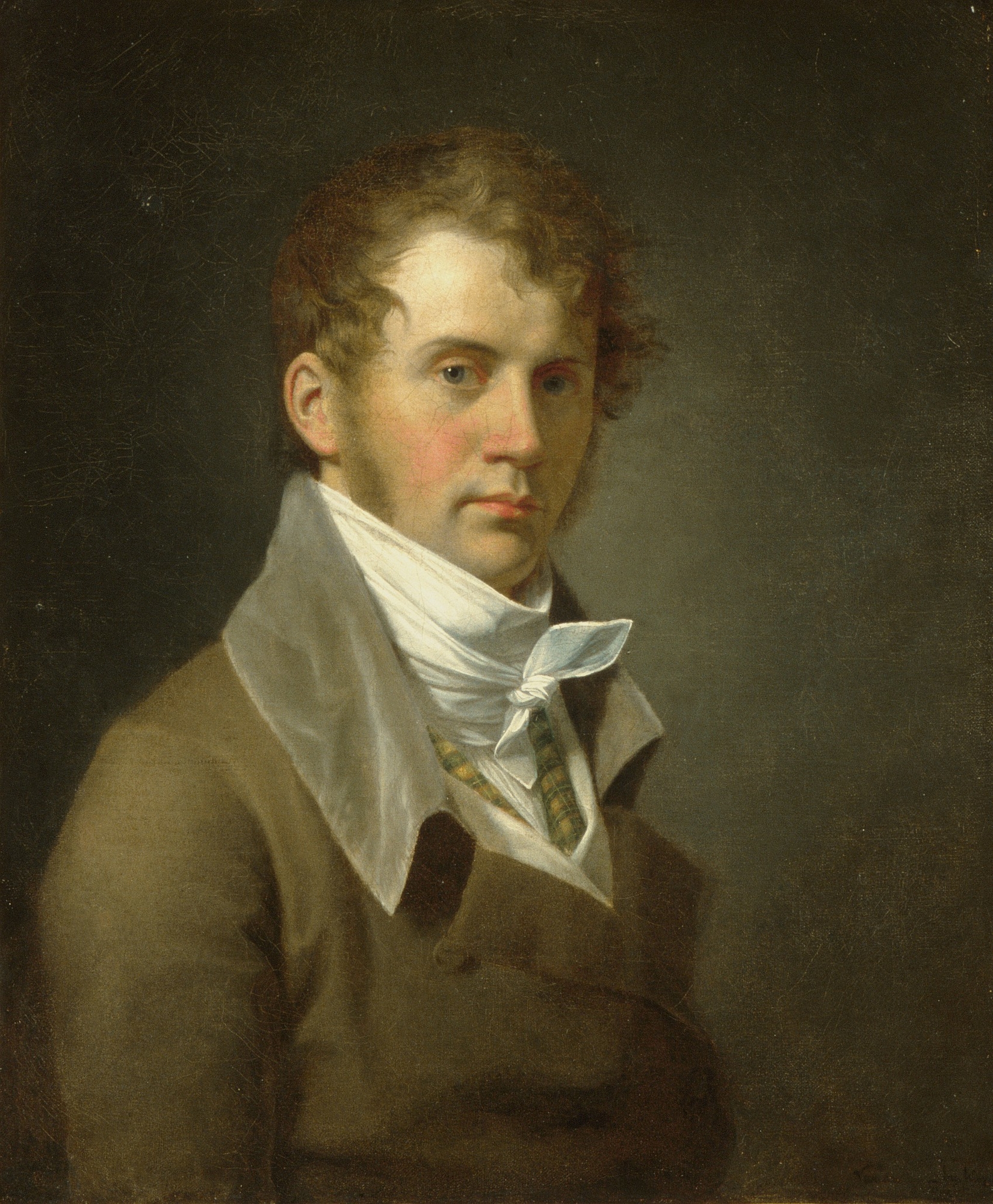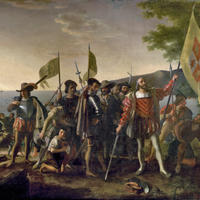More about John Vanderlyn
Works by John Vanderlyn

Contributor
When the United States was just a newborn babe, the Dutch immigrant John Vanderlyn came to represent the spirit and style of French painting, connecting one revolution with another.
Separate from the Dutch Renaissance of Judith Leyster and Johannes Vermeer, the artistic Vanderlyns had to come up with their own home-cooked way of painting. One of Vanderlyn's closest patrons was Thomas Jefferson's Vice President, Aaron Burr, who paid Vanderlyn to hang out with him at his big, luxurious house.
Another guest of Burr's was Joseph Brant, the chief of the Kanienʼkehá꞉ka people of the Haudenosaunee confederation, whose nations today straddle the border of the U.S. and Canada, and whose international alliance is an influence on the federal system of the United States. A century and a half later, all eyes were on Elvis as he brought his hip-shaking from the Black community to white teens, who could console themselves with the implicit idea that his artistic genius had no relationship to African music and the transatlantic slave trade. Similarly, one of Vanderlyn's functions was to hide the influence of natives on the U.S. system of government, turning our eyes toward Europe and the Greco-Roman tradition. When he did portray the "New World," it was to glorify Christopher Columbus. If the U.S. public had acknowledged that the natives were human, human enough to design the federal system which is the foundation of the U.S., it might have caused some problems in Washington.
When we extol the virtues of "liberty and justice for all," it's good to remember that this originally means, specifically, liberty from the United Kingdom, and that the U.S. was an angry child, vowing never to be like its parents, eventually waking up to realize that "maybe I'm just like my father, too bold," to quote Prince. In those early days, until Vanderlyn, the British schools of painting were the only training centers for painters in the U.S., and the Federalist movement, with its affinity for British ways, was bitterly squabbling with Burr and the Democratic-Republicans, who wanted to make a close alliance, including an artistic one, with France. The Democratic-Republicans also supported political equality among white men, those long-haired radicals!
If you visit both the U.S. and the U.K., you can see that the apple really doesn't fall far from the tree: aside from naming hundreds of places after their overseas counterparts, like Vanderlyn's hometown of Kingston, New York, the U.S. takes an enormous amount of cultural ideas from its former colonial governor. In Vanderlyn's time, nearly all painters in the U.S., including Vanderlyn's teachers, Gilbert Stuart and the Scottish Archibald Robertson and his Columbia Academy of Art, followed British styles of painting. The Federalist John Pintard, the founder of the New York Historical Society, paid Vanderlyn's Columbia Academy tuition. With Burr's financial help, Vanderlyn became the first U.S. painter to study the Parisian methods. At times, Burr's controversial reputation (especially his notorious duel with Hamilton) would become a burr in Vanderlyn's side, and his politics earned the resentment of many Federalists for both men. Still, Vanderlyn supported Burr when the politician lost all his money and fled to Paris.
Sources
- Avery, Kevin J., and Peter L. Fodera. John Vanderlyn's Panoramic View of the Palace and Gardens of Versailles. New York: Metropolitan Museum of Art, 1988.
- Burr, Samuel Engle. Thirty-seven years of the Aaron Burr Association, 1946-1983, Volume 1. Linden, VA: Burr Publications, 1983.
- Choice Literature: A Monthly Magazine, Volume 4. New York: John B. Alden, 1884.
- Isenberg, Nancy. Fallen Founder: The Life of Aaron Burr. New York: Penguin, 2007.
- McKay, George L. A Register of Artists, Engravers, Booksellers, Bookbinders, Printers & Publishers in New York City, 1633-1820. New York: The New York Public Library, 1942.
- Merrill, Jane, and John Endicott. Aaron Burr in Exile: A Pariah in Paris, 1810-1811. Jefferson, NC: McFarland, 2016.
- "Statement of Donald Grinde, Jr." Iroquois Confederacy of Nations: Hearing Before the Select Committee on Indian Affairs, United States Senate, One Hundredth Congress, First Session, on S. Con. Res. 76 ... December 2, 1987, Washington, DC. Washington, D.C
Featured Content
Here is what Wikipedia says about John Vanderlyn
John Vanderlyn (October 18, 1775 – September 23, 1852) was an American painter.
Check out the full Wikipedia article about John Vanderlyn











